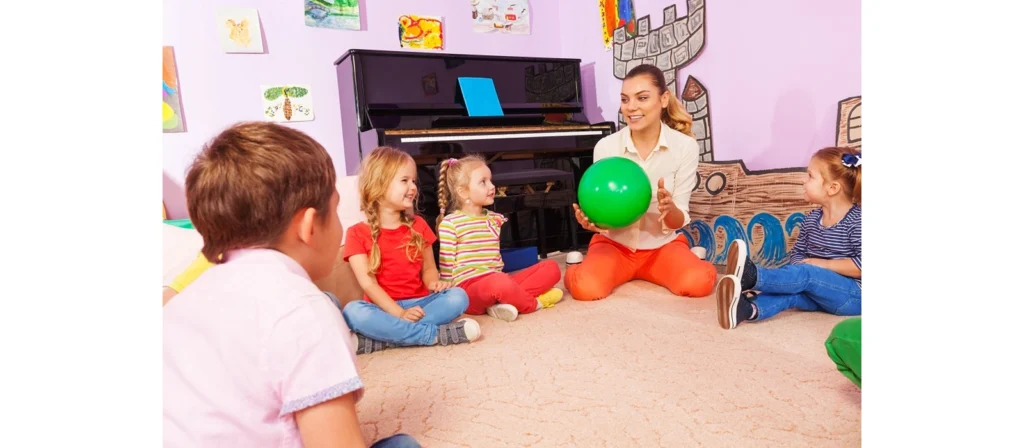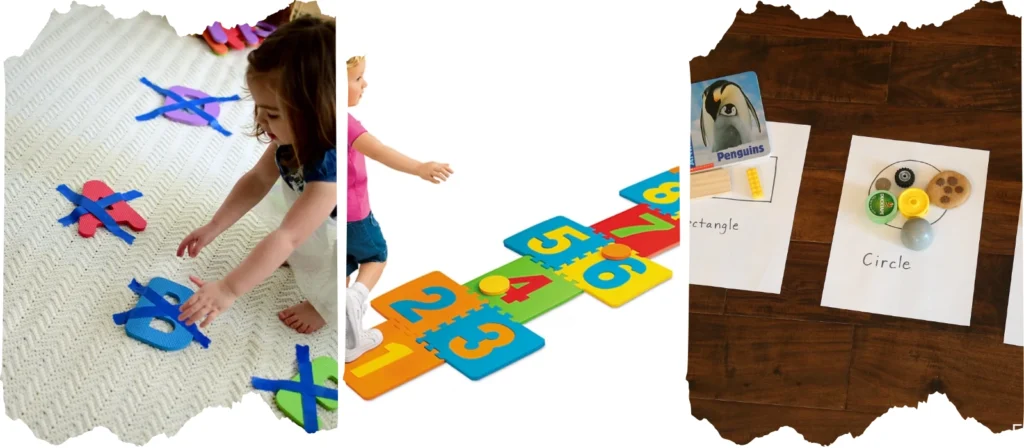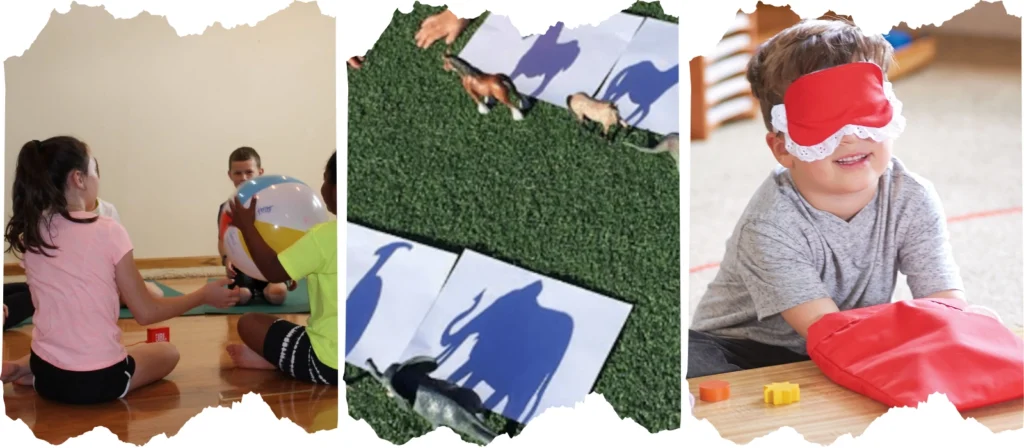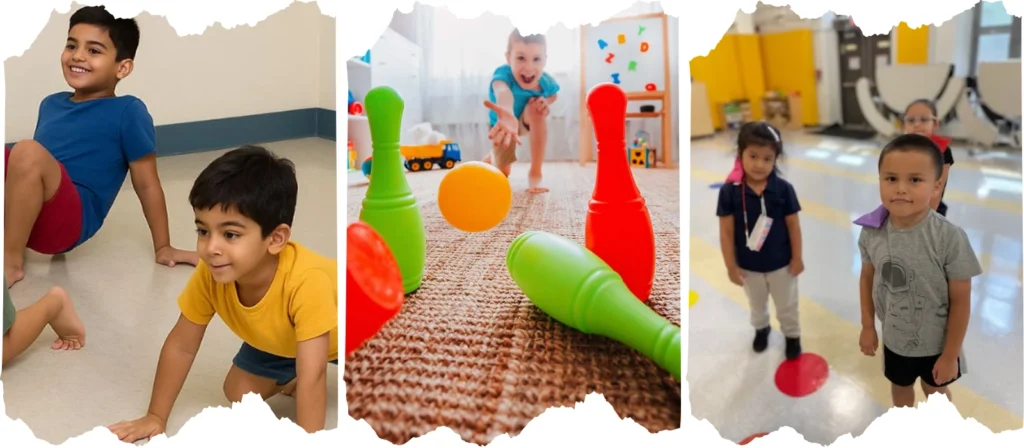Rainy day again? Snow piling up outside? Or maybe it’s simply too hot or too cold to let children out? We’ve all been there. The classroom turns into a pressure cooker of bouncing energy. Kids get restless, noisy, and distracted. Teachers struggle to maintain order. Meanwhile, parents expect consistent learning—even when outdoor play isn’t an option. So the big question is: how do we keep kids active, engaged, and learning indoors—without chaos?
The answer lies in well-planned, safe, and engaging indoor recess games. These activities are not just time-fillers—they’re critical tools for managing energy, building skills, and maintaining classroom harmony. Effective indoor play supports motor development, social-emotional learning, and even cognitive growth. It’s a chance to teach kids how to move, cooperate, and communicate—all while having fun.
When you run a kindergarten, indoor recess isn’t a backup plan—it’s part of your core routine. And the quality of your indoor play strategy can make or break the classroom experience. That’s why in this article, I’ll share over 30 of the best indoor recess games used by top kindergartens around the world, along with expert tips on how to organize them in small spaces.
Why Indoor Recess Games Matter for Kindergarten Classrooms
As someone who works closely with kindergarten owners and school procurement officers, I’ve heard it countless times: “Frank, what do we do when kids can’t go outside?” My answer is always the same—you don’t need to take children outdoors to give them the benefits of play. You just need the right indoor recess games.

Physical Development Benefits
Indoor recess games are not just fun distractions—they’re essential for a child’s healthy development. Let’s start with the physical aspect. When children are confined to indoor spaces without proper movement, they may experience restlessness, reduced focus, and even behavioral issues. With structured play, even indoors, children burn off energy, develop motor skills, and improve their physical fitness.
Social and Emotional Growth
From a behavioral perspective, indoor games offer a perfect opportunity to teach social-emotional skills like patience, empathy, and turn-taking. Many games require collaboration, rule-following, and group decision-making, which directly supports the learning goals of early childhood education.
Classroom Management Support
Moreover, indoor games are a lifesaver for teachers. They provide a structured way to maintain classroom order and manage transitions between academic lessons and play. Rather than letting energy escalate into chaos, the teacher can redirect it into a planned, developmentally appropriate activity that supports learning objectives.
Cognitive and Academic Gains
Educational researchers also point to the cognitive benefits of recess play, especially structured indoor play. According to a report from Edutopia, children who have regular play breaks—indoor or outdoor—perform better academically, show improved concentration, and have more positive classroom behaviors.
Practical Solutions for Weather Limitations
Finally, there’s a practical side: weather. In many countries and regions, outdoor play isn’t always possible. Rain, snow, poor air quality, or extreme temperatures can shut down playground time for days—or even weeks. Without a solid plan for indoor recess games, teachers may fall back on passive activities like screen time, which do little to support holistic development.
In short, indoor recess games are not a Plan B—they’re an essential part of any high-functioning kindergarten classroom. They support a child’s physical, emotional, social, and cognitive growth, while helping teachers manage time and space effectively.
Key Features of Effective Indoor Recess Games
The most successful indoor recess games share a few essential features. Whether you’re outfitting a new preschool or revamping your activity plans, knowing what makes a game “effective” can help you choose activities that actually serve your educational goals. Here are the features I always look for when recommending games to kindergartens around the world:
Safety First
Young children are still developing coordination and spatial awareness, so safety is non-negotiable. Games must avoid sharp objects, rough contact, and risky furniture. At XIHA Furniture, we design all our products with smooth edges, anti-slip bases, and child-safe finishes—so that active play doesn’t come with unnecessary hazards.
Minimal Equipment Required
Indoor recess often happens on short notice. That’s why the best games require little to no prep. Think simple materials like balloons, bean bags, or just chairs. Games that rely on complex gear can be impractical in real classrooms, especially when time and space are limited.
Flexibility for Small Spaces
Kindergarten classrooms vary greatly in size. Some are spacious, others are compact. Good games should adapt to both. Can the game be played in a circle, with desks pushed aside, or even in learning corners? Furniture that is mobile or foldable—like what we offer at XIHA—makes this even easier.
Age-Appropriate Rules
Games must be developmentally suitable. For 3–5-year-olds, that means simple instructions, quick rounds, and lots of physical activity. Avoid overly competitive formats or complicated scoring systems, which can frustrate younger children.
Skill Development Oriented
The best games teach something—whether it’s teamwork, counting, balancing, or listening. A great indoor recess game is one that blends play with purpose. When chosen correctly, games can reinforce early math, literacy, social, or physical education goals without the children even realizing they’re learning.
Easy Classroom Management
Teachers are juggling a lot. Ideal indoor games should be easy to manage with one adult present. That means clear structure, simple transitions, and minimal cleanup. Games that create more work than value won’t last in a busy kindergarten setting.
By choosing indoor recess games with these features in mind, educators can build a reliable, enjoyable toolkit of activities that engage young children and enhance classroom flow—no matter what the weather looks like outside.
30 Indoor Recess Games for Kindergarten
🧠 A. Cognitive & Learning Games
These games are designed to engage children’s minds while supporting their academic and developmental progress. Perfect for integrating learning into play, they help reinforce early math, literacy, logic, and listening skills—all in a fun, interactive format.

1. Alphabet Relay
Materials Needed: Alphabet flashcards or foam letters
How to Play: Place the cards at one end of the room. Split students into teams. One child at a time runs to pick the correct letter based on the teacher’s prompt (e.g., “Find the letter that starts ‘apple’”). The first team to collect all their letters correctly wins.
2. Math Hopscotch
Materials Needed: Masking tape, number cards or chalk (if on floor mats)
How to Play: Create a hopscotch board with numbers. Call out math questions like “2+2” and students must jump to the correct number. This reinforces basic arithmetic and number recognition.
3. Story Chain
Materials Needed: None
How to Play: Start a story with a sentence (e.g., “Once there was a frog…”). Each child adds one sentence to continue the story. This builds language, creativity, and active listening skills.
4. Simon Says – Learning Edition
Materials Needed: None
How to Play: Play Simon Says, but incorporate learning prompts: “Simon says touch something blue,” “Simon says make the letter ‘T’ with your arms.” Combines movement with vocabulary and early concepts.
5. Shape Scavenger Hunt
Materials Needed: Printed shape cards or simple shape drawings
How to Play: Show a shape (e.g., triangle) and have children walk around the classroom to find an object that matches the shape. This builds visual discrimination and geometry skills.
6. Opposites Match
Materials Needed: Flashcards with opposites (big/small, hot/cold, etc.)
How to Play: Hand out cards randomly. Children must walk around and find their partner with the matching opposite. Once found, they sit together. This encourages peer interaction and vocabulary development.
7. Counting Toss
Materials Needed: Bean bags, number buckets or labeled boxes
How to Play: Place labeled number containers on the floor (e.g., 1–10). Students toss bean bags into the correct bucket when you say a number or ask a math question. Great for number sense and motor skills.
🧘 B. Low-Energy, Quiet Games
These are perfect for calming the classroom atmosphere, especially after lunch or during transitions. These games require minimal movement but still keep children engaged, cooperative, and entertained.

8. Silent Ball
Materials Needed: A soft foam ball or beanbag
How to Play: Students form a circle. The ball is tossed around silently. If a child drops the ball, talks, or throws too wildly, they sit down. The last one standing wins.Students stand in a circle and toss a soft ball to one another—without making any noise. If a child talks, drops the ball, or throws poorly, they sit down. Last student standing wins. It’s fun, surprisingly competitive, and great for focus.
9. Shadow Drawing
Materials Needed: Flashlight or sunlight, small toys or objects, paper, pencils
How to Play: Place objects in sunlight or beam a flashlight to cast shadows. Children trace the outlines onto paper. Encourage them to color or decorate their shadow drawings after tracing.Use a flashlight or a window’s sunlight and have students trace the shadow of a toy or object on paper. This improves observation, creativity, and fine motor control—all while keeping kids quietly focused.
10. Freeze Dance (Whisper Version)
Materials Needed: Music player or phone with soft music
How to Play: Play quiet music and let kids move gently around the room. Stop the music at intervals—they must freeze without talking or giggling. Anyone who moves is out.Play soft music and let the kids dance around the room. Pause the music randomly. When it stops, they must freeze in place—silently. Anyone who moves or talks sits out. It’s playful but calming.
11. Puzzle Race
Materials Needed: Preschool-appropriate puzzles for small groups
How to Play: Divide students into teams and provide each with a puzzle. First team to finish their puzzle wins. Adjust time limits to keep it fast-paced and fun.Break students into small teams and give each a jigsaw puzzle. First team to complete it wins! Use large-piece preschool puzzles to match developmental levels. Promotes cooperation and attention.
12. Whisper Chain
Materials Needed: None
How to Play: One child whispers a sentence to the next, continuing around the circle. The final student says the message aloud. Compare it to the original—expect laughs and surprises!A message is whispered from one child to the next around the circle. At the end, the last child says it out loud. The sillier the sentence, the better the laughter—and listening skills.
13. Book & Buddy
Materials Needed: Stuffed animals, children’s picture books
How to Play: Each child picks a stuffed animal and a book. They sit in a quiet corner and read or tell stories to their “buddy.” Encourages imagination and calm focus.Each child grabs a favorite stuffed animal and a picture book. They sit quietly in reading corners and “read” to their buddy. Great for independent literacy and self-regulation.
14. Mystery Bag
Materials Needed: Cloth bag, small common classroom items (eraser, spoon, toy)
How to Play: A child reaches into the bag, feels an item without looking, and describes it aloud. Others try to guess the object. Rotate turns for everyone.Fill a small bag with random classroom objects. One child feels inside (no peeking!) and describes the object to the group to guess. Builds vocabulary and tactile exploration.
15. Color Hunt (Indoor Edition)
Materials Needed: None
How to Play: Announce a color and give students 30 seconds to quietly find something in the room that matches. They can point or bring it back to a central area if appropriate.Announce a color and have kids quietly find objects in the room that match. It’s a calm, observational game that works well in any space and reinforces color recognition.
🤸 C. Active Movement Games
These high-energy indoor games are ideal for helping children burn off excess energy, improve coordination, and develop gross motor skills. They work especially well when the weather outside is rough but the energy inside is high!

16. Animal Walk Race
Materials Needed: Open floor space
How to Play: Assign each child an animal (e.g., crab, bear, frog). They race across the room moving like their animal. This helps develop core strength, balance, and coordination while sparking laughter and imagination.
17. Obstacle Path
Materials Needed: Cones, chairs, tape, pillows—any safe classroom items
How to Play: Set up a safe indoor obstacle course. Children crawl under tables, jump over pillows, and walk a taped line. You can time them individually or do it as a team relay.
18. Balloon Tennis
Materials Needed: Balloons, paper plates, craft sticks or rulers
How to Play: Tape plates to sticks to make paddles. Let children bat balloons to each other without letting them touch the ground. It’s fun, safe, and improves hand-eye coordination.
19. Chair Limbo
Materials Needed: A limbo stick (broomstick, pool noodle) supported by chairs
How to Play: Children line up and try to go under the limbo stick without touching it or falling. Lower the stick after each round. A great game for balance and flexibility.
20. Indoor Bowling
Materials Needed: Plastic cups or pins, a soft ball
How to Play: Arrange cups like bowling pins. Children roll the ball and try to knock them down. You can use masking tape to mark starting points or add points for each round.
21. Freeze Tag
Materials Needed: Open space, music optional
How to Play: One or two children are “it”. When tagged, children must freeze in place. Others can unfreeze them by crawling under their arms. This fast-paced game promotes teamwork and agility.
22. Bean Bag Balance Walk
Materials Needed: Bean bags, masking tape lines on the floor
How to Play: Children place a bean bag on their head and walk across a balance path made with tape. This develops posture, focus, and coordination.
23. Jump the River
Materials Needed: Two ropes or long strips of paper
How to Play: Place two ropes on the ground as a pretend “river.” Children jump across. Gradually widen the river to increase challenge. Enhances leg strength and jumping skills.
🧘 D. Mindfulness & Calming Games
These games are perfect for helping children regulate their emotions, improve focus, and settle down after high-energy activities. They promote mindfulness, breathing awareness, and inner calm—skills essential to every child’s development.
24. Breathing Buddies
Materials Needed: Small stuffed animals or beanbags
How to Play: Children lie on their backs with a stuffed animal on their belly. As they breathe in and out, they watch the buddy rise and fall. This teaches mindful breathing and helps calm their nervous system.
25. Rainbow Yoga
Materials Needed: Quiet space, optional yoga cards or visuals
How to Play: Guide children through a series of gentle yoga poses, naming each pose after colors or animals (e.g., red = mountain pose, green = tree pose). Use storytelling to maintain engagement.
26. Guided Imagery Journey
Materials Needed: Calm narration (live or recorded), quiet space
How to Play: Invite children to close their eyes and listen to a calming story (“Imagine you’re floating on a cloud…”). Enhances imagination while reducing stress.
27. Sound Matching
Materials Needed: Pairs of containers with different hidden sound items (e.g., rice, paper clips, sand)
How to Play: Children shake one container and try to find its match by sound. This sharpens auditory focus and requires calm, intentional movement.
28. Calm Down Dice
Materials Needed: Foam dice or printable template with calming actions (e.g., “Hug yourself,” “Count to 10,” “Take 3 deep breaths”)
How to Play: Roll the dice and act out the calming prompt. Great for transitions or as a self-regulation station.
29. Glitter Jar Focus
Materials Needed: Clear jar, glitter, water, glue
How to Play: Shake the glitter jar and let children watch until all the glitter settles. Use as a metaphor: “When we’re upset, our thoughts swirl. When we’re calm, they settle like the glitter.”
30. Sit Spot Listening
Materials Needed: None (or optional soft music/nature sounds)
How to Play: Each child sits quietly in their chosen space and listens for 1–2 minutes. Afterward, ask them to describe what they heard. Builds sensory awareness and stillness.
These are perfect for calming the classroom atmosphere, especially after lunch or during transitions. These games require minimal movement but still keep children engaged, cooperative, and entertained.
How to Organize Indoor Games in Limited Space
Organizing indoor recess games effectively—especially in tight spaces—is both a creative challenge and a design opportunity. Many kindergartens struggle with balancing energy release and classroom order, particularly when the layout isn’t optimized for physical activity. The good news? With thoughtful planning and the right preschool furniture, indoor recess games can thrive in even the smallest environments.
Maximize Flexibility with Mobile Furniture
One of the biggest obstacles to successful indoor recess games is fixed furniture. That’s why at XIHA Furniture, we specifically design mobile, lightweight, and stackable tables and chairs to support fluid space transitions. When it’s time for indoor recess, educators can easily clear a section of the classroom within minutes.
For example, our folding activity tables and rolling toy storage units can be pushed aside to create movement zones. This flexibility allows teachers to host everything from quiet indoor recess games to full-on obstacle courses—all without needing a gymnasium.
Use Zones to Separate Game Types
To minimize noise and avoid chaos, define small zones throughout the classroom for different types of indoor recess games:
- A calm corner with mats for yoga or breathing games
- A puzzle and board game zone
- A movement area for beanbag toss or animal races
- A storytelling rug for imaginative play
Zoning also gives children choice and agency. They learn to self-select which type of play fits their mood—whether that’s jumping, stretching, thinking, or pretending.
Prep Materials in Advance
Keep essential tools for indoor recess games easily accessible: puzzles, bean bags, laminated game cards, dice, yoga mats, and more. Use labeled bins or open-shelf toy organizers so children can help set up and clean up. Preparation saves precious time and makes transitions smoother.
Think Vertical
Limited floor space? Go vertical. Wall-mounted activity boards, magnetic games, and Velcro-based tasks allow kids to engage in indoor play without taking over the entire room. At XIHA Furniture, we offer wall organizers and hanging felt boards that fit perfectly into narrow corners.
Safety and Visibility First
Always maintain clear sightlines during any indoor recess game. Avoid placing tall shelves or dividers that block your view. Ensure that all furniture used is rounded-edge, non-slip, and anchored if tall. Safety is non-negotiable when children are in motion.
Create a Flexible Indoor Recess Plan
The most effective classrooms have a recess plan for every weather scenario. Post a visual indoor activity board with 3–5 game options each day, so students know what’s coming. This avoids last-minute scrambling and helps set expectations.
BONUS TIP: Incorporate indoor recess into your lesson planning. For example, if the class is learning about animals, integrate an “animal walk” relay. If you’re working on counting, include a toss game where kids add up their points.
With smart furniture solutions and thoughtful routines, indoor recess games can become a favorite part of your school day—not a compromise.
Benefits of Indoor Play on Child Development
When we talk about the value of indoor recess games, we’re not just filling time—we’re fueling development. As a furniture factory that works with educators worldwide, I’ve seen firsthand how structured, engaging indoor recess games can shape a child’s brain, behavior, and academic trajectory.
Indoor Recess Games Support Brain Development
Research in child psychology shows that early childhood movement and play directly influence neural connections. Activities that involve physical motion, spatial awareness, and sensory exploration—like many indoor recess games—enhance the development of the prefrontal cortex, which governs self-control, focus, and problem-solving.
According to Harvard University’s Center on the Developing Child, active play in young children lays the foundation for executive functioning. When a child navigates an obstacle course, balances a bean bag, or remembers a sequence of steps in a game, their brain is building the very tools they’ll need to learn math, read, and manage social interactions.
Emotional Regulation and Resilience
Regular participation in indoor recess games gives children outlets to manage emotions, release stress, and reset their attention. Calming games help overstimulated kids settle; high-energy games help under-stimulated children express themselves. Over time, students learn to self-regulate—and that’s a powerful lifelong skill.
Games like “Breathing Buddies” or “Glitter Jar Focus” provide tools children can rely on when they’re anxious or upset. Emotional resilience, impulse control, and mindfulness all start with structured, repeated, intentional indoor play.
Enhanced Social Skills and Cooperation
Unlike individual learning tasks, most indoor recess games require interaction. Taking turns, listening to others, negotiating rules, and resolving conflicts—all these social practices are embedded in group play.
A simple game of Freeze Tag or Simon Says becomes an opportunity to develop empathy and collaboration. Kids who regularly participate in these experiences are more likely to succeed in group work, handle disagreements peacefully, and develop leadership skills.
Learning Through Movement
Kinesthetic learning—the idea that kids learn best when they move—is especially relevant in kindergartens. Through indoor recess games, children explore letters, numbers, shapes, and stories while using their bodies.
Think of math hopscotch, alphabet relays, or storytelling circles. The physical engagement makes concepts more memorable and relevant. At XIHA Furniture, we design learning environments that complement this approach, giving children enough space and flexibility to learn with their full bodies.
Healthier Bodies, Sharper Minds
Last but not least, indoor recess games keep kids physically active even when the weather doesn’t cooperate. This supports cardiovascular health, balance, coordination, and muscle tone.
Just 20 minutes of moderate movement can dramatically improve attention span and behavior in class. That’s why structured indoor recess is now seen not as a luxury, but as an essential part of the daily schedule.
By building a classroom culture that embraces movement, play, and creative exploration—even indoors—we’re giving children the foundation they need to thrive physically, emotionally, socially, and academically.
How to Choose the Right Indoor Recess Games for Your Kindergarten
With so many indoor recess games available, it can be overwhelming to choose the right ones for your kindergarten. The key is to align each game with your space, student needs, educational goals, and available furniture. Here’s a step-by-step approach we recommend to our global clients:
Step 1: Match Games to Student Age and Abilities
Different age groups require different types of indoor recess games. For example:
- Ages 3–4: Focus on sensory and movement games like “Animal Walks” or “Balloon Tennis”
- Ages 4–5: Add more structured group play, such as “Simon Says” or shape scavenger hunts
- Ages 5–6: Introduce cognitive challenges like storytelling chains or team puzzles
Always ensure that the game rules are easy to understand and developmentally appropriate.
Step 2: Align Games with Educational Goals
Select indoor recess games that support your learning themes:
- Language development: Alphabet relay, whisper chain
- Math skills: Counting toss, math hopscotch
- Social-emotional learning: Breathing buddies, calm-down dice
- Motor coordination: Obstacle paths, limbo
These games can be seamlessly integrated into your weekly teaching plans.
Step 3: Consider Your Space and Layout
Evaluate the dimensions of your classroom and identify where certain types of indoor recess games can occur:
- Large open spaces = movement-based games
- Corners = calming or sensory activities
- Rug areas = story-based or circle-time games
With XIHA’s mobile and stackable furniture, space can be quickly reconfigured to allow more variety in game types.
Step 4: Choose Low-Prep, Low-Mess Options
Especially for busy teachers, indoor recess games should require minimal setup and cleanup. That’s why we recommend:
- Soft, safe materials (like foam balls, bean bags)
- Visual guides (dice with picture prompts, laminated activity cards)
- Easy storage and access via labeled bins or wall organizers
Step 5: Rotate Games to Avoid Boredom
Even the best indoor recess games can lose their novelty. Keep a rotation plan:
- Create a weekly activity chart
- Let students vote on their favorites
- Introduce a new game every 2 weeks
This keeps students engaged and encourages anticipation and participation.
Choosing the right indoor recess games isn’t just about fun—it’s about aligning play with purpose. With the right approach and supportive furniture, indoor play can become one of the most impactful parts of your kindergarten day.
Conclusion
Indoor recess games are far more than just rainy-day time-fillers—they’re a core part of childhood development, classroom management, and educational enrichment. With the right combination of thoughtful game selection and space-optimized furniture, every kindergarten can transform indoor time into meaningful learning and joyful movement.
At XIHA Furniture, we’re proud to support schools worldwide with safe, adaptable, and education-focused products that make indoor recess games easier to implement—and more effective for kids.
Let us help you build a smarter, safer, and more engaging play environment—rain or shine.



